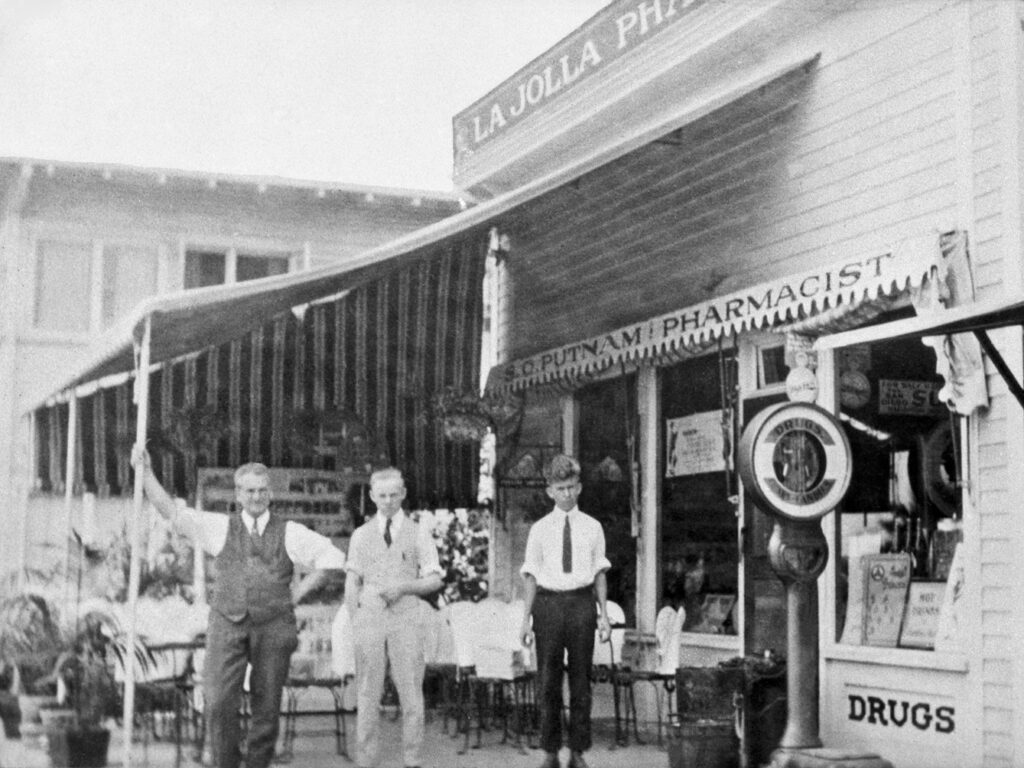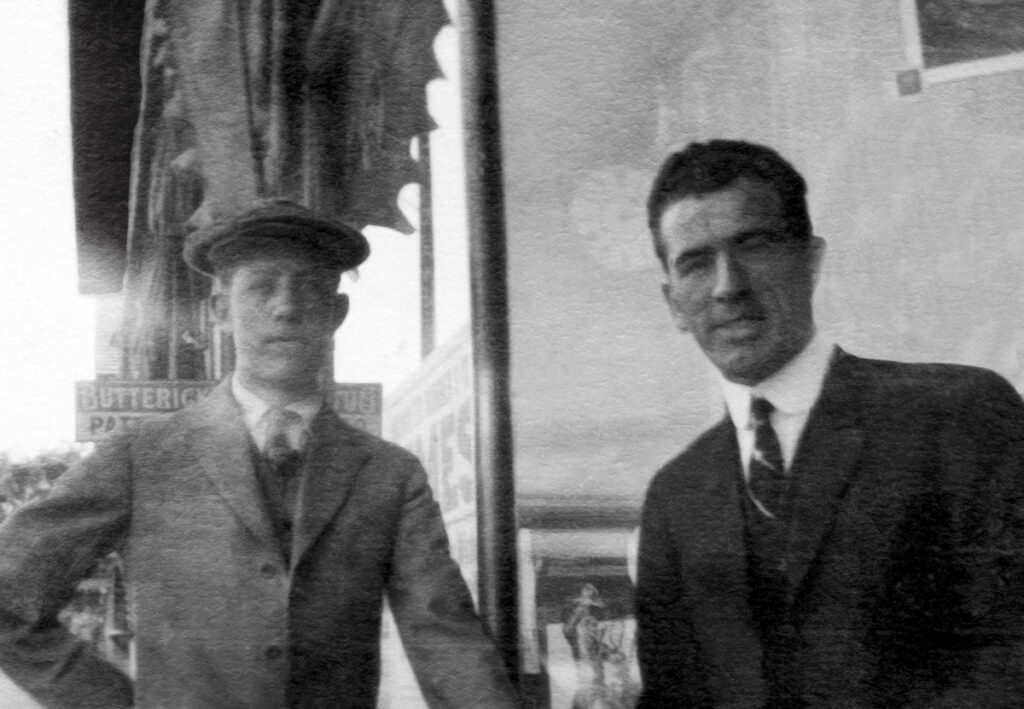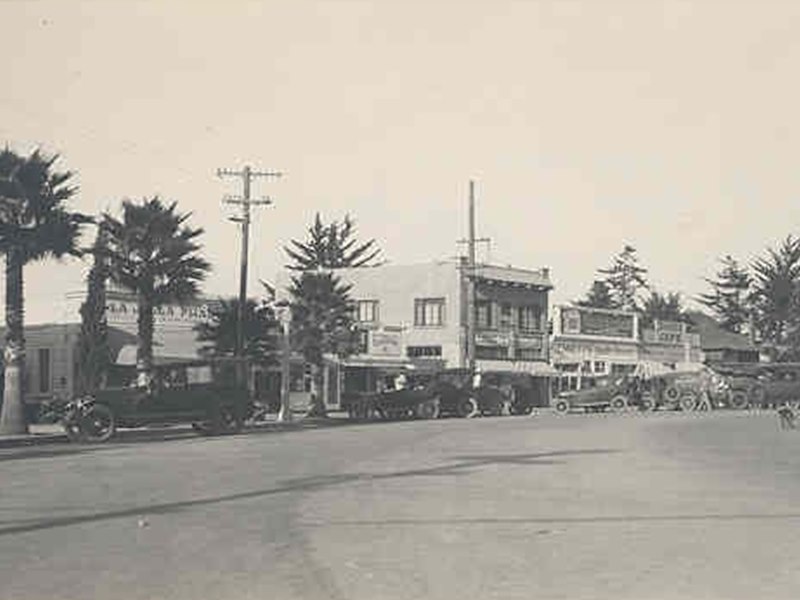If you've enjoyed a drink or a meal at the Grande Colonial hotel's restaurant, NINE-TEN, then you've experienced Putnam's Legacy - a legacy of quality that began with ice cream and continues with contemporary gourmet meals.
Before NINE-TEN, there was Putnam's Restaurant, and before that, there was Putnam's Pharmacy - which at one time may have been the single most popular place in La Jolla to eat, even if it was just ice cream. It all started in the early 1900's. La Jolla's population was only 1,000 full-time residents. The local apothecary, La Jolla Drugstore, wasn't the busiest of businesses. We don't have any hard figures, but our best guess is that Noah's Ark - the cigar store next door - had the same problem, which might explain why they opened a card room in the back.

Into this scene walked Silas O. Putnam, a Kansas man who, after spending a winter in La Jolla staying at The Colonial never went back. He purchased the drugstore and renamed it Putnam's Pharmacy. According to Putnam, a big day was one in which he filled three prescriptions. He had to make a change, so he changed the business to one that would sweeten the lives of thousands of La Jollans. Putnam put in an ice cream fountain and overnight had a successful business on his hands selling more chocolate Cokes and banana splits than he was medicine. He was so busy he put seats out front. The combination of ice cream, fresh air, socializing, and people-watching was magical. Putnam's was a hit with visitors and locals.
Imagine a typical sunny weekday afternoon when The Bishop's School let out. The girls would head to "Putties", gossip, check out the opposite sex, and weigh themselves for fun on the storefront scale. For a penny, they could see if they had gained weight after indulging in Putnam's delights. Walt Hall was the young boy behind the counter serving the girls. When asked about it he smiled and said "There's no place in the world like La Jolla". Just what exactly do you think he was referring to?

The hotel and Putnam's Pharmacy made great neighbors for more than 10 years - Putnam and Bane had a great, symbiotic relationship. When Bane drew up plans to expand The Colonial, Putnam's Pharmacy was incorporated into the hotel. The new Putnam's had a classic counter for serving ice cream and drinks plus café seating outdoors. When he moved the business inside the hotel's corner space he advertised "the store where you feel at home". Everybody was happy with that except…Gregory Peck.
Evidently, Gregory Peck, Sr. - the actor's father - was a pharmacist at Putnam's who wanted to continue practicing his profession. When he saw the emphasis was more on serving food than medicinal remedies, Peck Sr. opened his own drugstore a few blocks away. It was now inevitable that Putnam's would serve more and more food. During the war they were kept busy serving meals to soldiers who were staying at the hotel. The partnership between the hotel and Putnam's lasted more than 30 years - well into the 1950's - until Silas Putnam's son Putty wanted to expand and subsequently moved the business across the street into their own building.

In the late 1970s, the Colonial went through an extensive renovation, which included the space once occupied by the pharmacy. The prized corner location was turned into a restaurant affectionately named Putnam's Restaurant. It was designed to look like the 1920s La Jolla, with dark wood paneling, wrought-iron chandeliers, ceiling fans, and 1920s-period furniture. The ice cream counter became a bar at which martinis were served instead of ice cream. Perhaps the best feature was the rebirth of outdoor seating on Prospect Street - today an 85-year-old tradition thanks to Silas Putnam.

Putnam's Grill was popular with locals for its quality and elegance for three decades. In 2001, the restaurant closed for a brief property-wide renovation and re-opened with the new name, NINE-TEN. The new eatery had a high standard and legacy to live up to and surpassed everyone's expectations. The owners of the Colonial created a world-class restaurant that has and continues to win high praise, including an "extraordinary to perfection" rating by Zagat. A recognized name in culinary circles across the country, the restaurant has received many accolades including San Diego's Best Hotel Restaurant and Best American Restaurant. Wine Spectator has given NINE-TEN the "Award of Excellence" and The Los Angeles Times called it "one of the year's most exciting discoveries."
In 2011, Executive Chef Jason Knibb faced off against Bobby Flay on the television show, Iron Chef America, in a seafood showdown that garnered a great deal of national attention. This gives some credence to the idea that the legacy goes back to the Park Hotel, which in 1896 advertised, "Table unsurpassed. Fish meals a specialty". Maybe it's just the magic of the place, but today, NINE-TEN is a jewel of La Jolla and a part of the La Jolla experience not to be missed. That's what they used to say about Putnam's banana splits.





